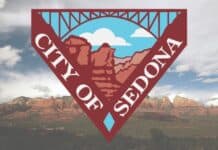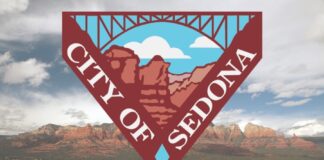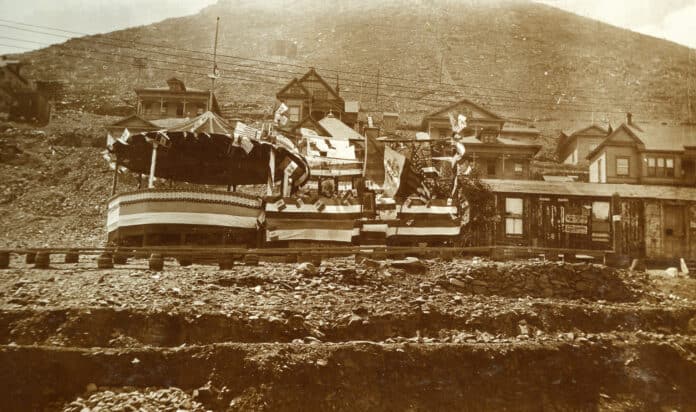
Jay Mark, a former antiques and bookstore owner, broadcaster and contributor to the Arizona Republic and Antiques Register, recently presented a history of the town of Jerome in the Si Birch Community Room at the Sedona Public Library.
“When we visit it today, we don’t realize the history that is behind. Numerous fires, landslides, floods, strikes, polluted air, epidemics, depression, recessions, and financial collapse are just some of the things that town has experienced in its lifetime and is still surviving today,” Mark said. “One adversity after another, any of which would have spelled doom for a lesser community in Arizona.”
Mark explained that Jerome’s unusual location on a 30-degree slope halfway up Mingus Mountain was both the reason for its foundation as a mining town and a major contributing factor to several of the calamities the town experienced.
“Considered the first Anglo to visit the area was Spanish explorer Antonio de Espejo who through travels in New Mexico and Arizona in the 1580s,” Mark said. “About 40 years after the Coronado expeditions, he met the Hopi and heard stories of silver mines further to the west of the Hopi culture … He went in search of the mines, reaching the Verde River, probably in the area of Montezuma’s Castle National Monument today. He found the mines near present-day Jerome and was unimpressed by their potential.”
“After the Mexican American War ended in … 1848 and the region became part of the United States, more and more Anglo-Americans began to settle in that area,” Mark continued. “Ranchers came in, homesteaders and more prospectors. And in 1863 gold was discovered near Prescott, and that opened the floodgates to thousands [of] prospectors that were pouring into the region.”
Joseph Walker and a group of prospectors who left the California gold fields, likely to avoid conscription into either the Confederate or Union armies during the Civil War, discovered gold placers and subsequently lode deposits in what became known as the Big Bug Mining District, located a few miles southeast of Prescott.
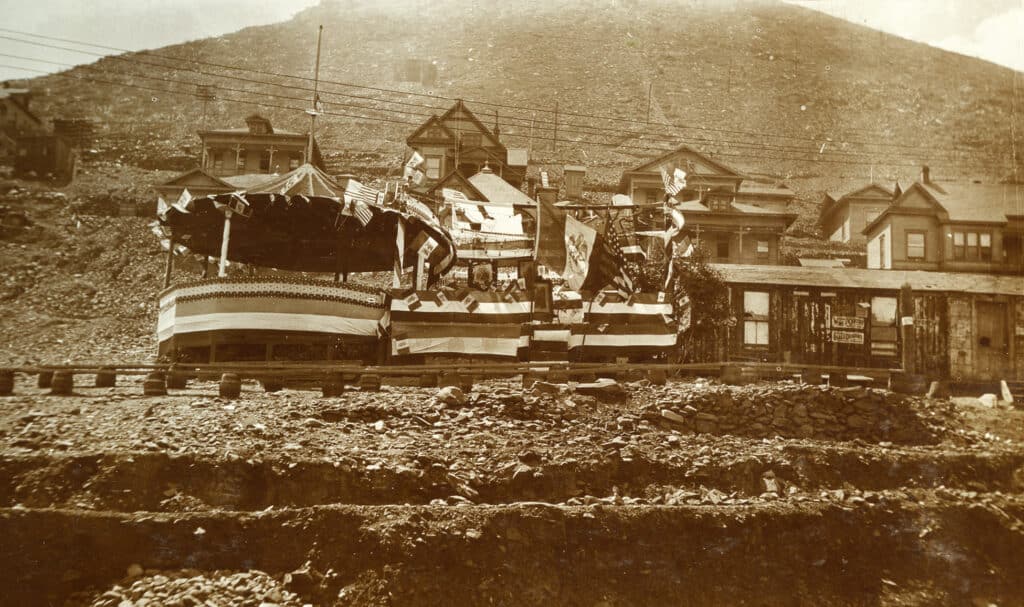
Photo courtesy of Herbert V. Young and Jerome Historical Society
One of the earliest mining claims in Jerome was filed by Albert Sieber, a German immigrant, former Minneapolis, Minn., policeman and Union soldier, in 1876. More than a dozen claims were filed that year, which is now considered the start of the town’s boom period.
“Sieber’s claim was for a copper mine he named ‘The Burning Queen’ that lay within what became known as Cleopatra Hill,” Mark said. “But when it came to mining, secrets were hard to keep, and so many, many people started pouring in.”
Sieber spent two decades as an Army scout during the Apache Wars and served in Fort Verde for several years. During his life, he survived more than two dozen arrow and gunshot wounds, but he did not survive the boulder that crushed him at the age of 63.
The construction of Roosevelt Dam began in 1903, and Sieber worked there intermittently for the remainder of his life. Eventually he supervised a crew of Apaches working on the Tonto Road near the dam. On Feb. 19, 1907, the crew spent the day attempting to move a massive six- or seven-ton boulder down the mountain. Determined to finish the task, Sieber began probing at the boulder with a stick.
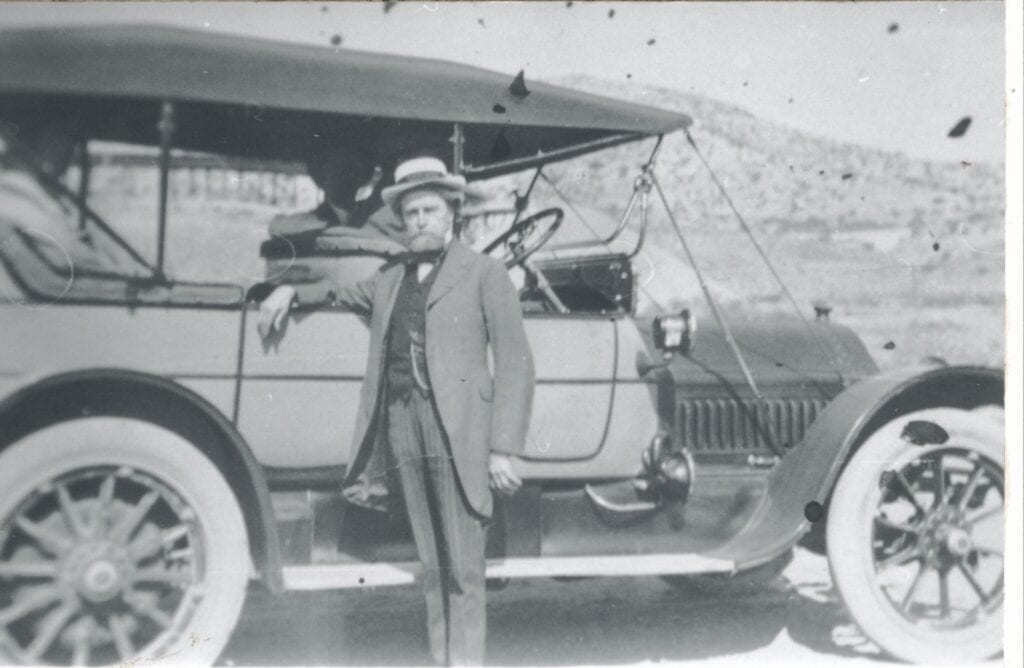
Photo courtesy of Herbert V. Young and Jerome Historical Society
“Suddenly [the boulder] seemed to shudder, eased forward almost imperceptibly, then with irresistible momentum, crashed down the slope, flattening everything in its path,” biographer Dan L. Thrapp wrote in his book “Al Sieber: Chief of Scouts.” “The indomitable spirit of the ancient fighter had finally been crushed out of him. Al made no sound. He died as he had lived, with no fears, no lingering, no complaints. Al Sieber, immigrant, soldier, lawman, prospector, Indian fighter — a man — was off on his last adventure.” Sieber was buried in the Globe cemetery, and while there were rumors that the Apaches had caused the boulder to roll on him, there was no evidence to support the claim.
His estate was largely negligible and among his most valuable assets were a horse valued at $27, two tents with accessories valued at $37, a saddle and bridle worth $10 and a $3 silver watch he was wearing when he was crushed. It was enough to cover the cost of the funeral.




